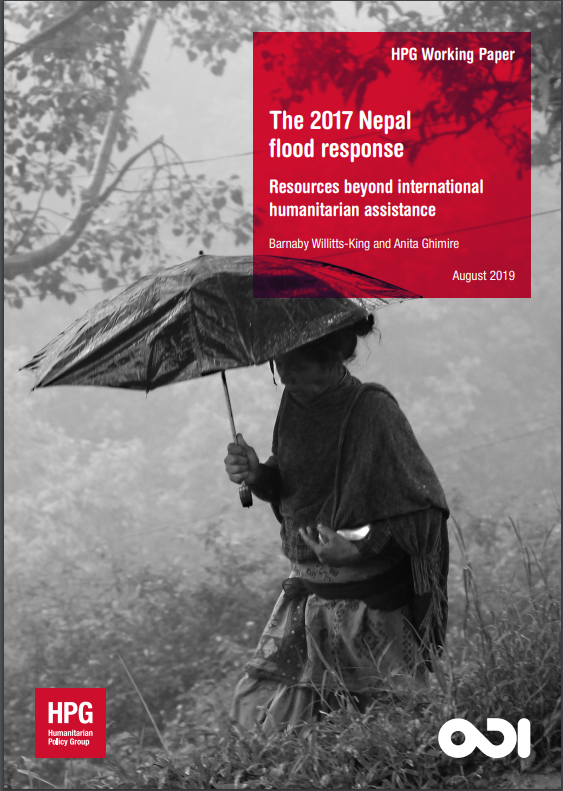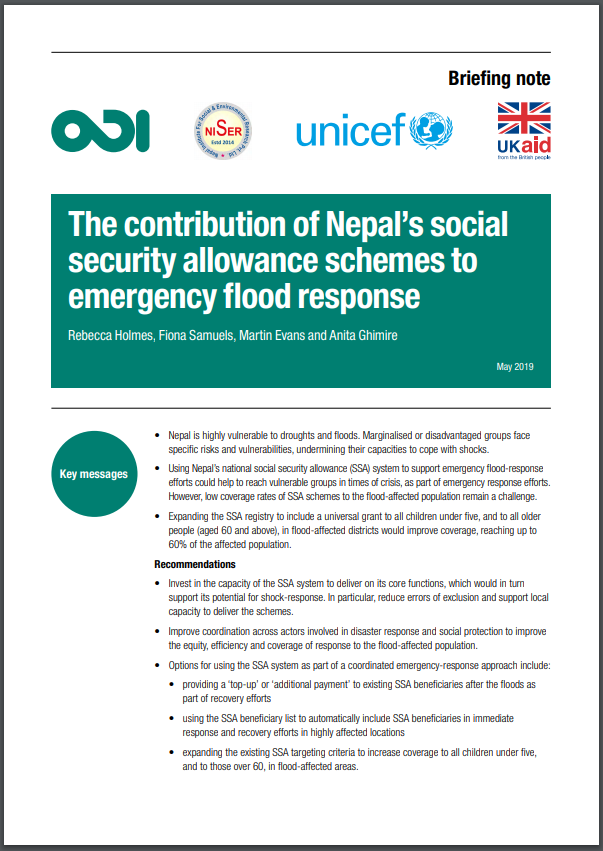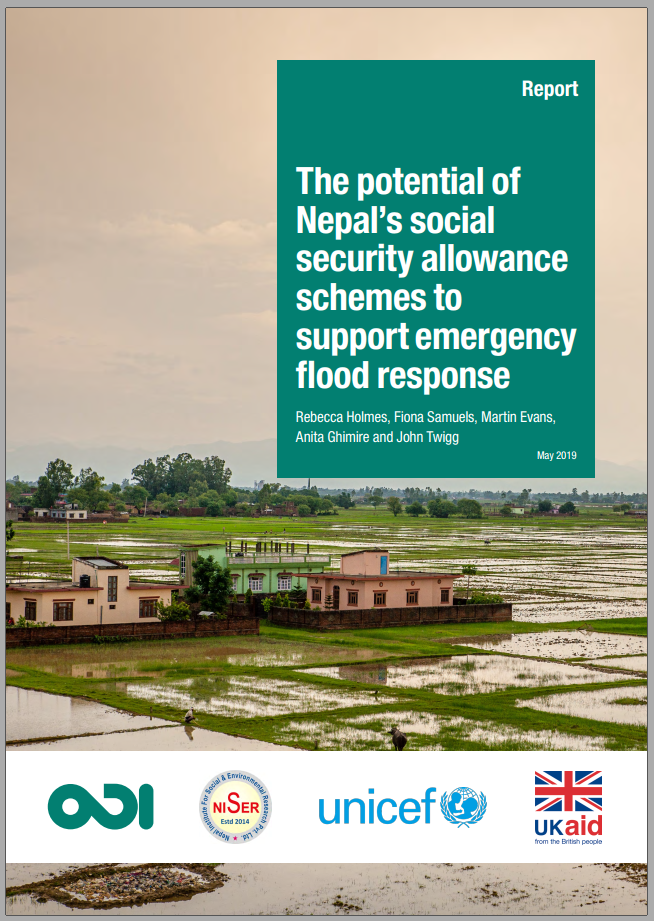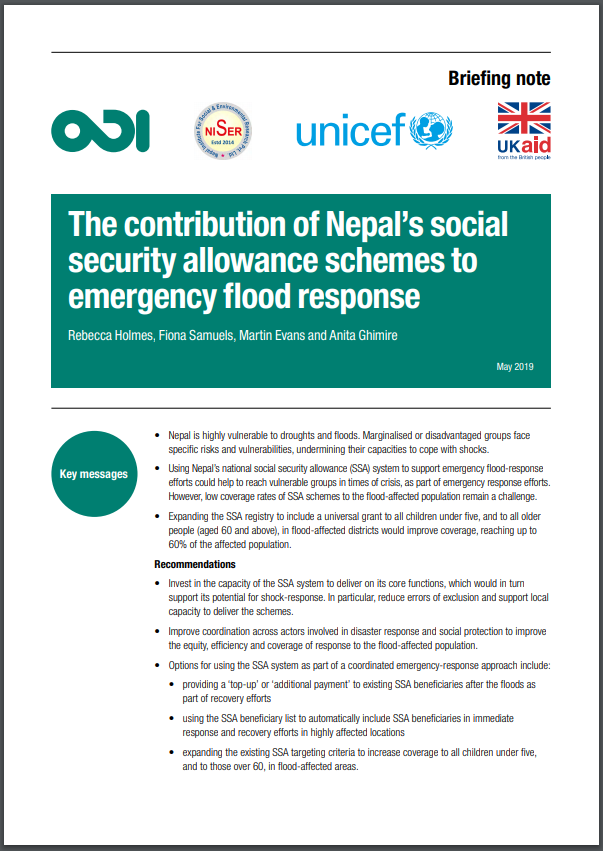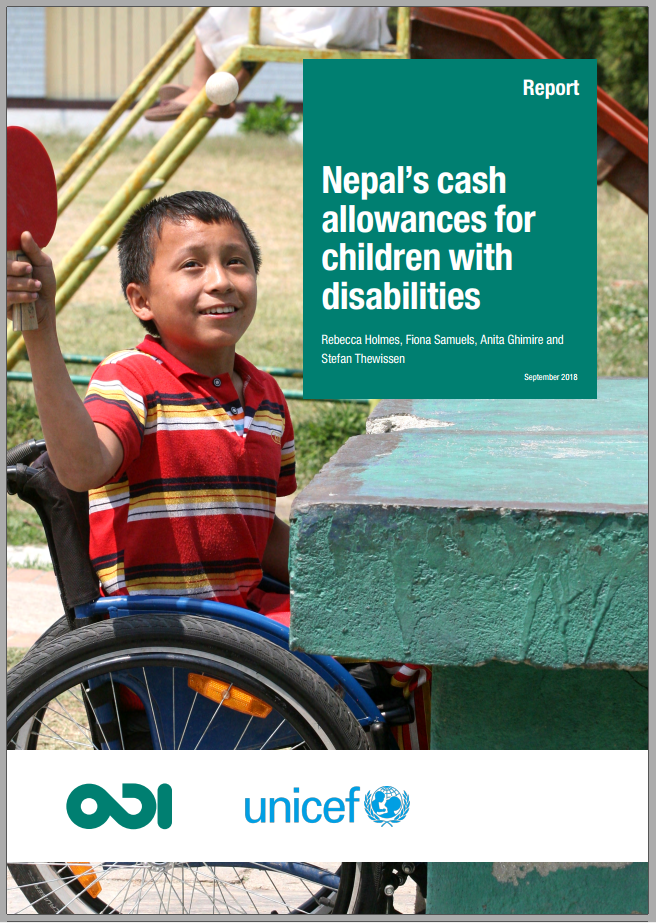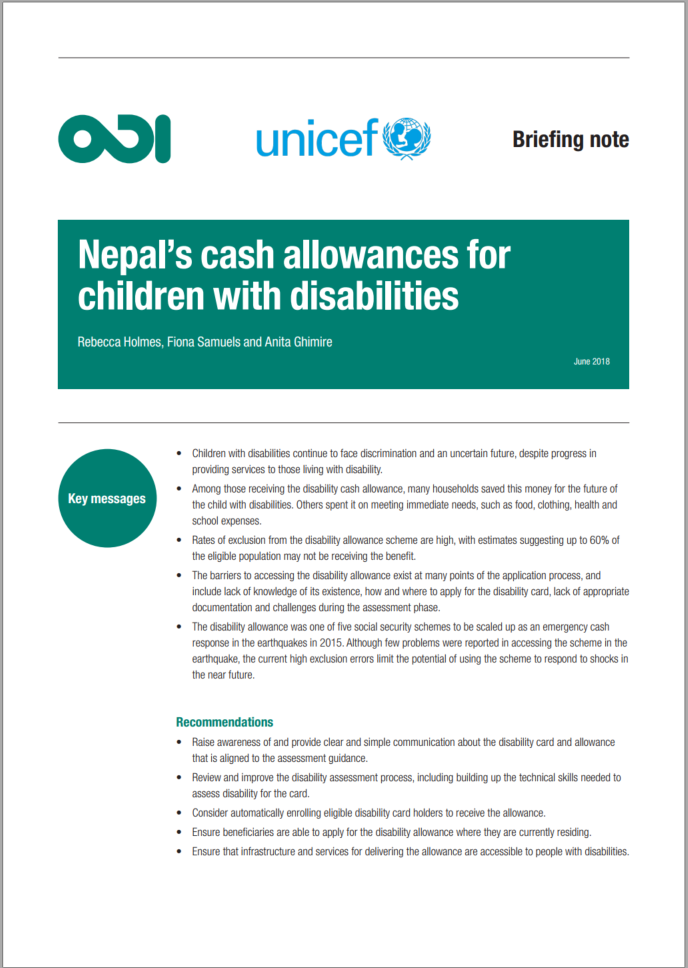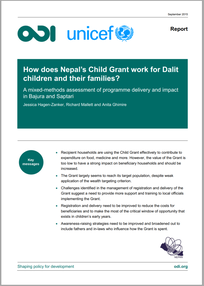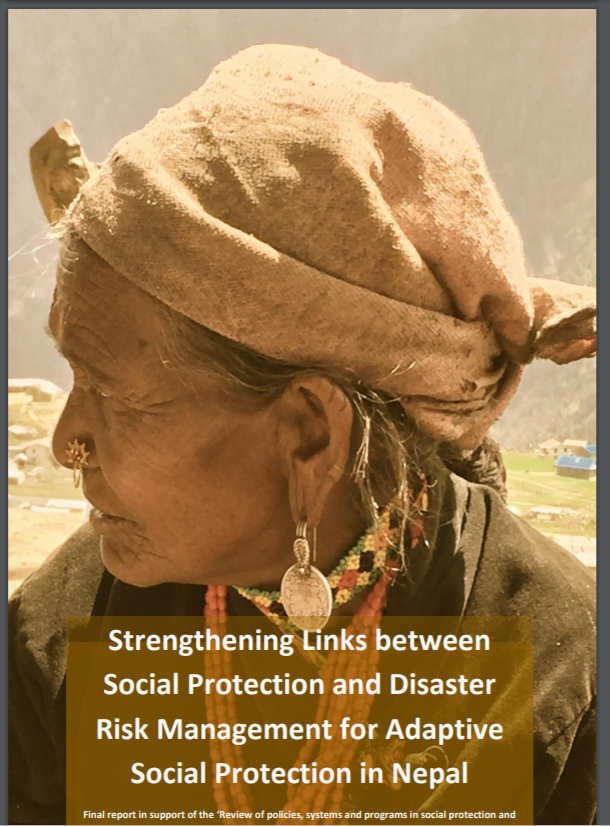The 2017 Nepal flood response
Resources beyond international humanitarian assistance
|
The devastating floods of 2017, which hit 27 districts in Nepal and affected 1.7 million people, were a catalyst for discussions about the future of shock-responsive social protection approaches in the country. In 2015, the United Nations Children’s Emergency Fund (UNICEF) and the Government of Nepal (GoN) successfully delivered emergency response to benefciaries of the social security allowance (SSA) schemes in areas affected by that year’s Ghorka earthquake and this report examines whether such an approach would be appropriate or feasible in response to floods. |

